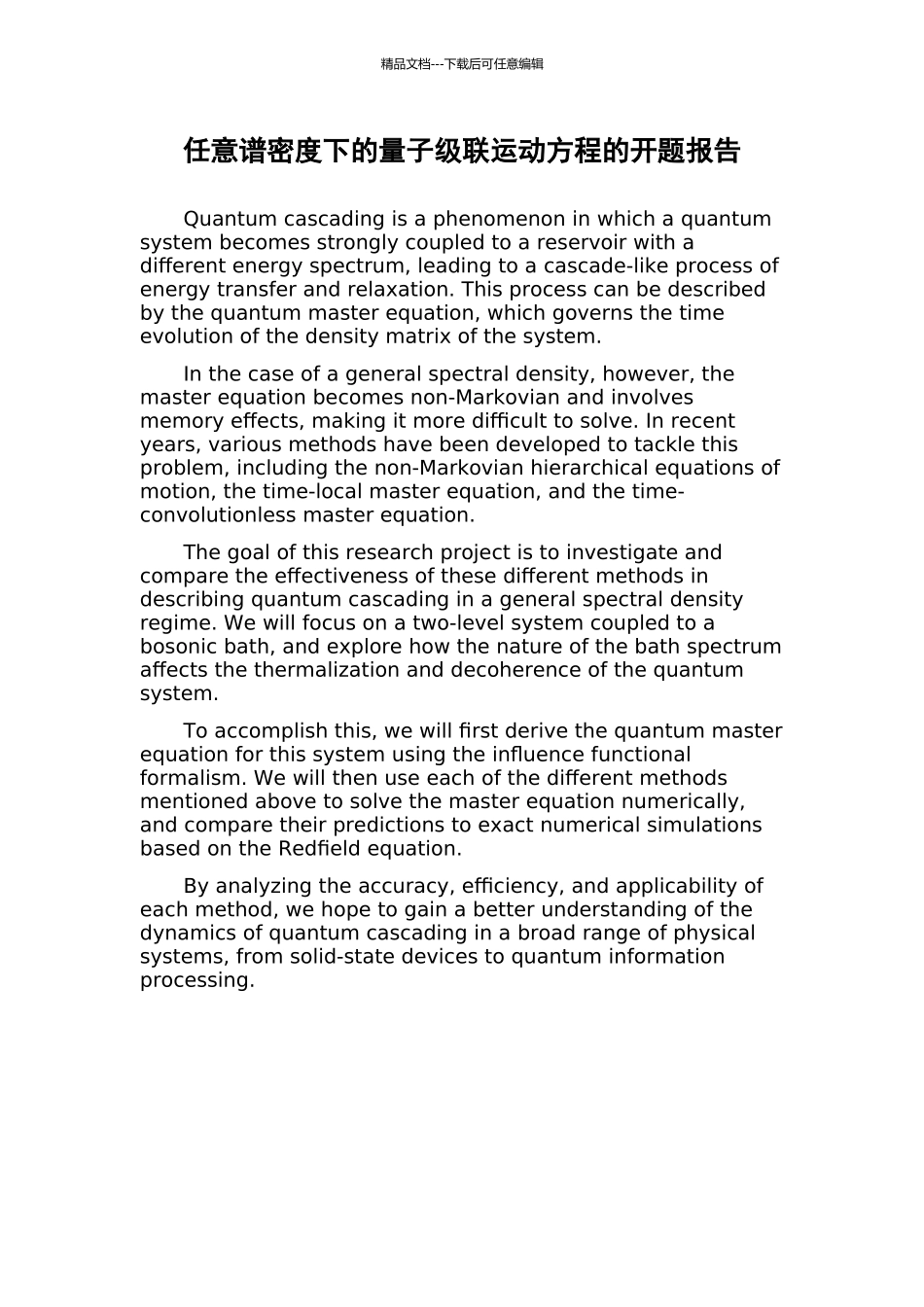精品文档---下载后可任意编辑任意谱密度下的量子级联运动方程的开题报告Quantum cascading is a phenomenon in which a quantum system becomes strongly coupled to a reservoir with a different energy spectrum, leading to a cascade-like process of energy transfer and relaxation. This process can be described by the quantum master equation, which governs the time evolution of the density matrix of the system.In the case of a general spectral density, however, the master equation becomes non-Markovian and involves memory effects, making it more difficult to solve. In recent years, various methods have been developed to tackle this problem, including the non-Markovian hierarchical equations of motion, the time-local master equation, and the time-convolutionless master equation.The goal of this research project is to investigate and compare the effectiveness of these different methods in describing quantum cascading in a general spectral density regime. We will focus on a two-level system coupled to a bosonic bath, and explore how the nature of the bath spectrum affects the thermalization and decoherence of the quantum system.To accomplish this, we will first derive the quantum master equation for this system using the influence functional formalism. We will then use each of the different methods mentioned above to solve the master equation numerically, and compare their predictions to exact numerical simulations based on the Redfield equation.By analyzing the accuracy, efficiency, and applicability of each method, we hope to gain a better understanding of the dynamics of quantum cascading in a broad range of physical systems, from solid-state devices to quantum information processing.
